Scatter and survive: inside a US military shift to deny China ‘big, juicy’ targets
America is upgrading far-off runways, reviving World War II airfields and pumping money into Australian military bases in a strategy shift to counter the threat of China’s enormous missile arsenal.

The remote Pacific airfield used to launch the atomic bombings of Japan during World War II is being revived with a different foe in mind: China.
Runways emerging from the encroaching jungles on the tiny island of Tinian, a US territory, are part of a sweeping shift in how America’s military would respond to a possible conflict in Asia.
Instead of relying on a few large air bases, the US would disperse its warplanes to make them less vulnerable to China’s enormous arsenal of missiles. That means identifying, upgrading and reviving airstrips across the Indo-Pacific that could be pressed into service.
The US Air Force calls this effort Agile Combat Employment, or ACE, and the rebuilding on Tinian is a key piece of that.
Nearly 80 years ago, two US B-29 bombers took off from Tinian and changed the course of history, dropping atomic bombs on Hiroshima and Nagasaki.
In 1945, Tinian’s northern airfield was large and busy, hosting four runways.
In the decades after World War II, the jungle took over, devouring large tracts of the airfield.
Now the US military is back on Tinian in a big way with a mission to bring its North Field back to life.
Reclaiming a World War II-era airfield largely obscured by thick, emerald-green jungle on a tiny Pacific island is no simple task.
In recent months, red-capped crews from the US Air Force have trudged through the dense foliage with machetes and GPS devices. Their task: to mark the boundaries of the 8,500-foot-long erstwhile runways, based on black-and-white images and maps from the 1940s.
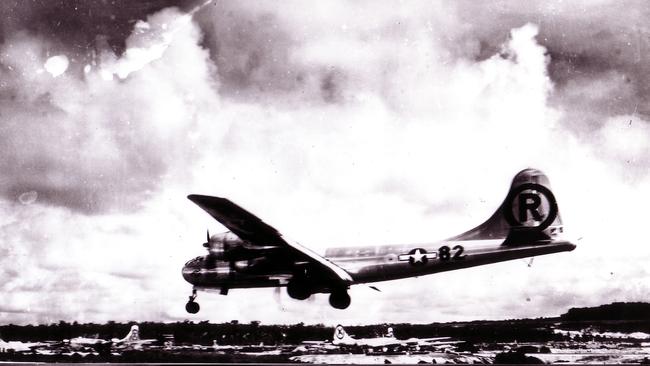
They encountered yellow-streaked spiders, swarms of bees and stifling humidity. Hulking excavators knocked down swathes of trees, averaging 117 truckloads a day. On their best day, the crews cleared an area the size of nearly eight football fields.
“The density was tough, very tough,” said Master Sgt. Jody Branson, the operations superintendent, who belongs to the Air Force’s 513th Expeditionary Red Horse Squadron. “If me and you walked back there, we could be 10 feet apart and not even see each other.”
For decades, the US didn’t need the airfield. It consolidated its presence at a small number of large air bases — in Japan and on the American territory of Guam, for instance. It can no longer afford to do so. In a conflict, China could direct its significant firepower at those well-known bases to destroy aircraft, crater runways and cripple US air power.
To prevent that from happening, the US would switch to a different posture during a crisis. Aircraft would scatter across an array of airfields in the Indo-Pacific — be it full-fledged bases belonging to allies, lone airstrips on far-out islands or even runways at civilian airports. They would hop between the different locations to keep China guessing and increase their chances of survival.
The point is to “not consolidate all of our aircraft into one big, juicy target,” said Michael Winkler, deputy director of air and cyberspace operations for the Pacific Air Forces. “There’s a dispersal aspect to it, and then there’s flexibility as well where aircraft aren’t specifically tied to one base.”
If that sounds straightforward, it isn’t. Keeping smaller units supplied across disparate, distant and bare-bones locations is hard. There is another distance problem: The farther aircraft spread out from the main battlefield, the harder it can be for them to contribute to the fight.

Adopting a more dispersed posture also means the US needs a lot more options for places it could use to land, take off and project power in a crisis. How many? As many as possible, said Winkler.
“We’re interested in any runways, basically,” he said. “If you’ve got 7,000-plus feet of runway, we’ll look at that as a potential operating base.”
That list consists of several dozen sites across the vast region, he said, adding: “We’ve got a big map, it’s got a lot of airfields plotted in it, and we’d dearly love to get to as many of those as possible.”
Some of them are on US territories, such as Tinian, but most aren’t — including vital places close to Taiwan, the region’s most dangerous potential flashpoint. Japan and the Philippines, for instance, are home to a number of military installations and commercial runways to which aircraft could potentially disperse. The large Philippine island of Luzon alone hosts six or seven suitable airfields, Winkler said.
That means in a conflict, Washington would need to have tricky discussions with allies and friendly governments for wartime access to their territories. Winkler said the US military has decided not to push those conversations “up until the moment of that crisis.”
“It’s an intentional move we’re making in the competition phase,” he said, referring to the current state of US-China relations, in contrast to a potential conflict or crisis phase. “Trying to not make our allies and partners choose and make a very, very difficult choice between probably an economic partner of choice and a military partner of choice.”

For now, the US is sending its airmen out to as many potentially useful sites as possible to get a lay of the land. At a number of spots, it is laying the groundwork to make facilities more suited for US use. It is measuring runways, building new ramps, warehouses and fuelling infrastructure, and training to operate with lean teams from austere locations.
On Basa Air Base in the Philippines, the US is financing a taxiway and a parking apron sized to accommodate American aircraft, after upgrading the runway and building a warehouse. Basa is one of nine Philippine military sites — four of which were added last year — under a deal that gives US forces access to rotate through and to build infrastructure.
On Tinian, in addition to rebuilding North Field, the US is bulking up the international airport with new taxiways and parking space for up to 12 refuelling aircraft, budget documents show. The site is intended as a secondary fuel hub with storage tanks and pipelines in case the US’s closest large base, on the island of Guam, is damaged.
On Guam itself, military crews are rehabilitating another World War II-era airfield so that aircraft can spread out across different points on the same island. About 500 miles southwest on coral-fringed Yap, a Micronesian island, the Air Force has proposed a $400 million runway extension to operate “in the event that access to other western Pacific locations is limited or denied,” according to budget documents.
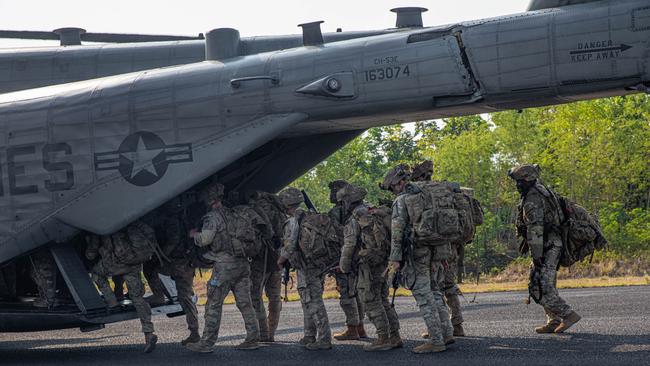
Airfield improvements are planned over the next few years on the tourist island of Saipan and on at least two sites in the archipelago nation of Palau.
The US is expanding Tinian’s international airport to serve as a backup fuel hub.
Much of the digging and paving at the moment is taking place in an arc called the Second Island Chain, which includes a smattering of territories the US controls as well as countries where the US has military access. For American forces, the task of upgrading infrastructure and prepositioning supplies at these locations is easier than at sites in the First Island Chain, which spans Japan, the Philippines and Taiwan.
The First Island Chain is valuable because it lies closer to China, but the US is more dependent on foreign governments there and political winds can more easily shift.
Farther out, Washington is pumping money into two northern Australian air bases. At Darwin, it has built fuel storage and is making a squadron operations facility. US-funded fuel storage is also going up at a base at Tindal, and an apron and other infrastructure are planned so that the installation — which until now has catered to fighters — can accommodate B-52 bombers.
Positioning bombers in Australia would force Beijing to decide whether to use its most costly long-range missiles to hit targets that far away and possibly draw another US ally into conflict.
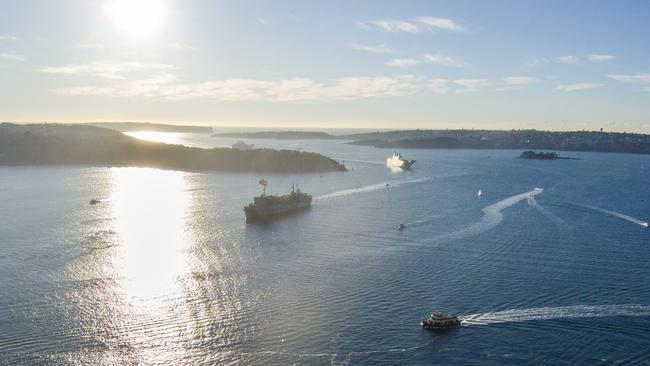
Airmen are trying to get the hang of the new location-hopping reality.
In February, US and allied aircraft bounced between six airfields on three islands: Guam, Saipan and Tinian. For the first time this year, the US-led Valiant Shield exercises included US fighters operating from the Japanese bases of Matsushima and Hachinohe. Both of them could, if Tokyo agreed, act as dispersal locations for US aircraft in a contingency. In August, the US deployed B-2 stealth bombers to an Australian air base near Brisbane, in the country’s east.
“Having American forces operating in smaller units in more locations reduces the likelihood that China can successfully launch a massive first strike,” said Stacie Pettyjohn, a senior fellow and director of the defence program at the Center for a New American Security, a Washington-based think tank. “It will hopefully increase doubts in the minds” of the Chinese Communist Party that it can quickly and easily win a war, she said.
China’s firepower
Beijing’s military modernisation has eroded US dominance. Its arsenal of missiles has grown rapidly in number, range and accuracy. If China moved to invade democratically governed Taiwan — which it has vowed to take, by force if necessary — it could send volleys at the US’s main air bases in the region to destroy aircraft and stop, or at least delay, American intervention.
For the US, this means the era of sanctuary at those bases is over.
China’s missile brigades dot the country, with many clustered in the east.
They can fire hundreds of missiles to go after targets at varying distances, including US bases in the region, like Kadena Air Base, less than 400 miles from Taiwan.
US aircraft operating from there would play a vital role in a fight over Taiwan, but Kadena’s proximity to China makes it particularly vulnerable.
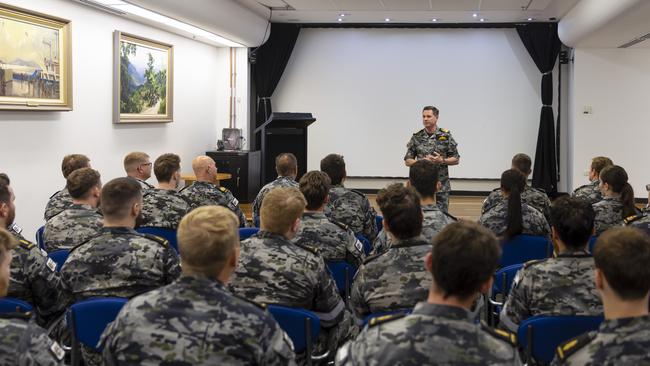
Farther away, the US has another big installation, Andersen Air Force Base.
But China has developed intermediate-range ballistic missiles that could reach it.
Andersen is a strategic US node. As many as 150 aircraft can park there, and it houses the Air Force’s largest fuel storage capacity anywhere. Airmen consider it a “gas and go.”
On rotation at nearly all times are three or four tanker aircraft that can refuel other planes midflight. In the past 12 months, B-52 bombers have come to Andersen twice, for several weeks at a time. In February, more than 80 US and allied aircraft descended on the base for exercises.
The US military is developing more options to spread out aircraft — on Guam itself, and on the nearby islands of Tinian and Saipan.
It recently rehabilitated a short, underused airstrip at the US Navy base on Guam and uses the island’s airport for exercises. At another site on Guam, Northwest Field, Air Force crews are rebuilding taxiways, clearing overgrown parking surfaces and throwing up a quick-build shelter that can double as a hangar.
The US flew its last World War II combat mission, to destroy Japan’s oil facilities, from this location. One of its two runways was repaired last year, while the other — nicknamed Thunder — will be fixed likely starting next year. The asphalt is cracked, tufts of grass have broken through, and potholes make even a car ride backbreaking.
Northwest Field is envisioned as an austere site, which means it won’t have all the facilities of a base. When the Air Force needs it, mobile air-traffic-control teams would come out, establish communication with incoming aircraft, and help planes land and take off.
“It’s all about expanding capability, right? We want to stay flexible, stay agile,” said Capt. Luke Eckstein, who is part of the team rehabilitating the airfield. “Two is better than one, six is better than five.”
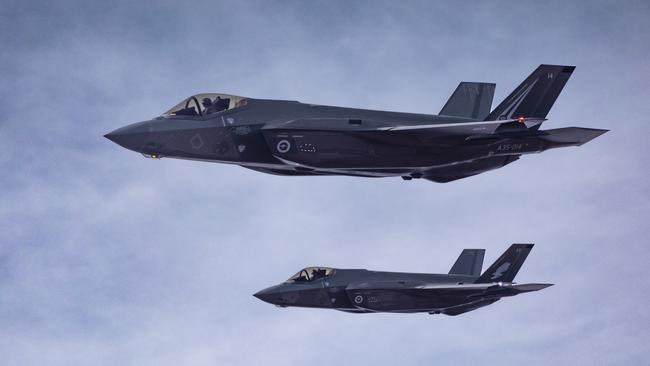
The question mark
Analysts say the US isn’t investing anywhere near enough in infrastructure, and military construction isn’t moving as fast as it needs to. Fiscal constraints mean many projects sit on unfunded wish lists, competing priorities pit buying new aircraft against pouring concrete, and far-flung locations exacerbate bureaucratic and logistical hurdles.
“What we’re trying to do is hard,” said Andrew Huntoon, deputy director of logistics, engineering and force protection for the Pacific Air Forces. He pointed out that the Air Force must navigate local rules around environment and cultural heritage, the remote locations of some of the bases and the regular design process.
Still, he said, the bottom line is that the US needs to upgrade infrastructure. “We have some crumbling facilities in our area of responsibility,” he said.
Another knotty problem is logistics — getting equipment, spare parts, fuel, munitions and support crew to locations scattered across the region, possibly under enemy attack. Part of the solution is to stock material ahead of time. But if hostilities broke out, the US would still need to flow supplies to the right place at the right time while the pieces move across a dizzying chessboard.
“Having aircraft at an airfield doesn’t do me much good unless I’ve got maintainers to support those aircraft, potentially weapons to load on those aircraft in a combat scenario, gas to put in those aircraft and everything else,” said Winkler, of the Pacific Air Forces. “It really is a full-up soup-to-nuts dispersal of all equipment across the theatre that we need.”
Aside from getting access from allies, logistics is the biggest question mark over the strategy, said Jacob Heim, a senior policy researcher at Rand, an American think tank. “In theory, from a survivability standpoint, you might want to be so dispersed you have two aircraft at every base, but there’s no way you could actually have the logistics to support the aircraft when they’re that widely dispersed,” he said.
Symbols of war
The Air Force teams out on Tinian have glimpsed the difficulties. The island is less than 40 square miles and is home to around 2,000 people. It has a school, a public library, a medical centre — no hospital. There is only one gas station. Rental equipment needs to be shipped or flown in from elsewhere.
“When you’re stuck waiting for parts, when you’re stuck waiting for stuff that’s on a boat or you have to get it here via certain aircraft — that’s the only way you can get it — it just takes time,” said Maj. Blake Rothschild, commander of the squadron clearing the northern airfield.
When flying into Tinian, it is hard to imagine the scale of the US mobilisation eight decades ago. America sent thousands of Navy Seabees to carve what became a sprawling airfield, along with roads and other supporting infrastructure. Grainy images show broad strips of runway appearing within a few months, flanked by dozens of keyhole-shaped parking spots filled with aircraft.
Today, the island is studded with symbols of war. Not far from where the old runways are being revived is the bomb pit where the first atomic bomb ever to be dropped in combat was loaded onto an aircraft. Close by are air-raid shelters from an earlier era of Japanese occupation, before American forces took over Tinian. A restaurant where US personnel now unwind over karaoke is decorated with military memorabilia.
At North Field, the small Air Force crew of around 30 people has spent months clearing out the jungle. Whether all four airstrips will ultimately be paved is being determined, the Air Force said.
“We’re writing the next chapter in history,” said Rothschild. “We’re not sure what the end of that’s going to look like, though.”





To join the conversation, please log in. Don't have an account? Register
Join the conversation, you are commenting as Logout